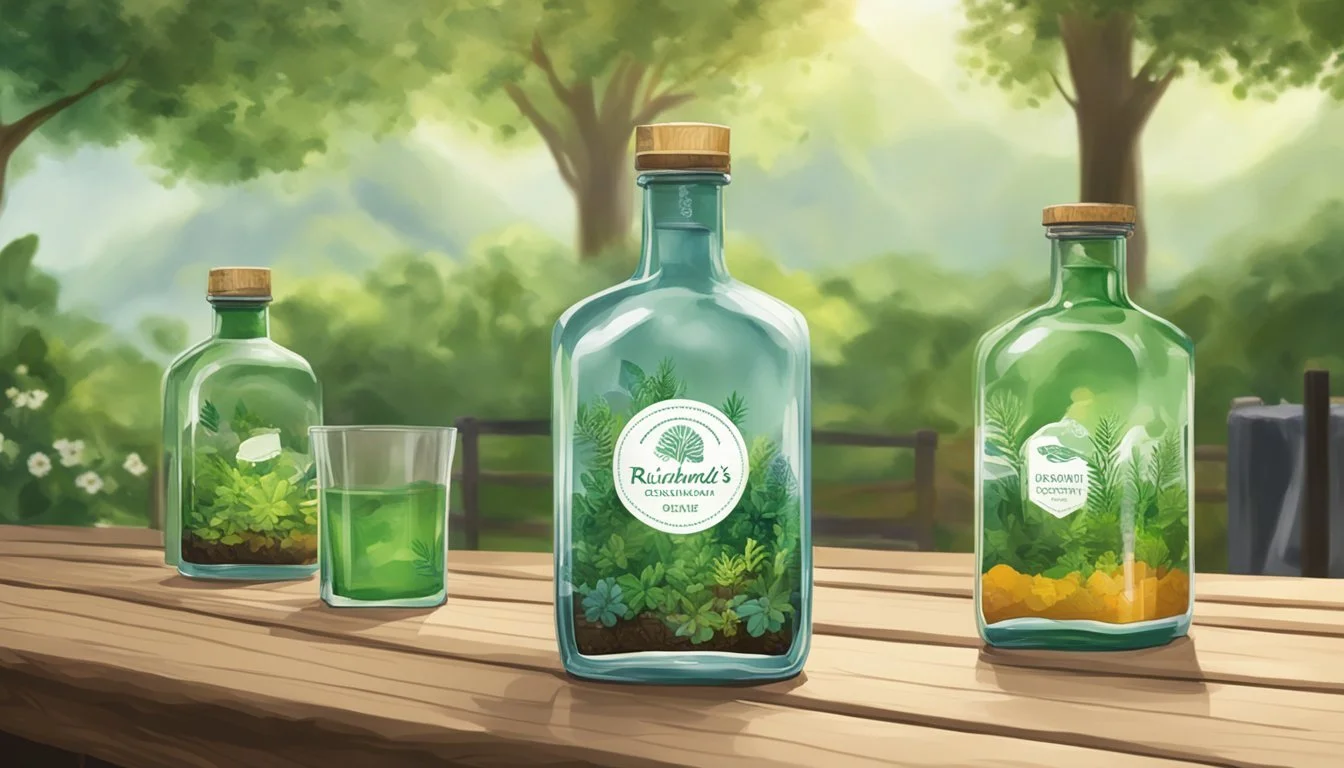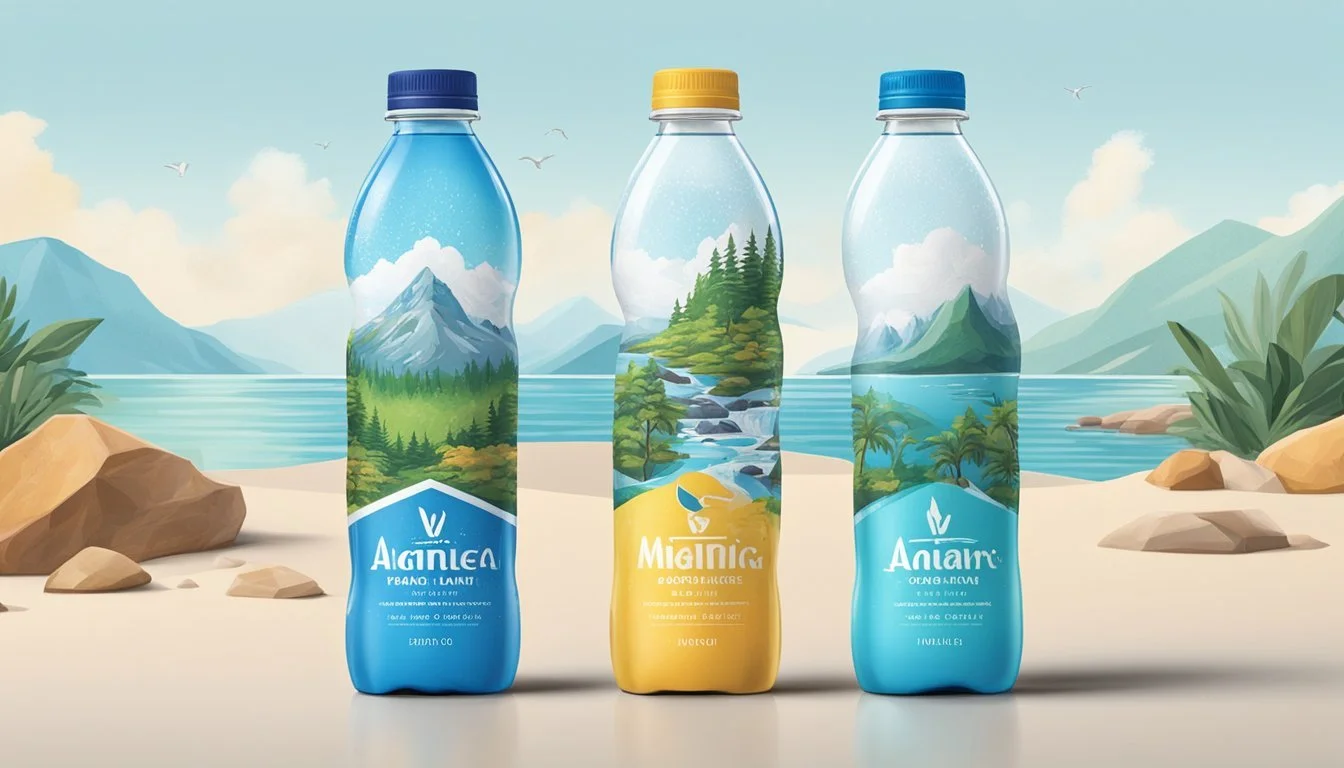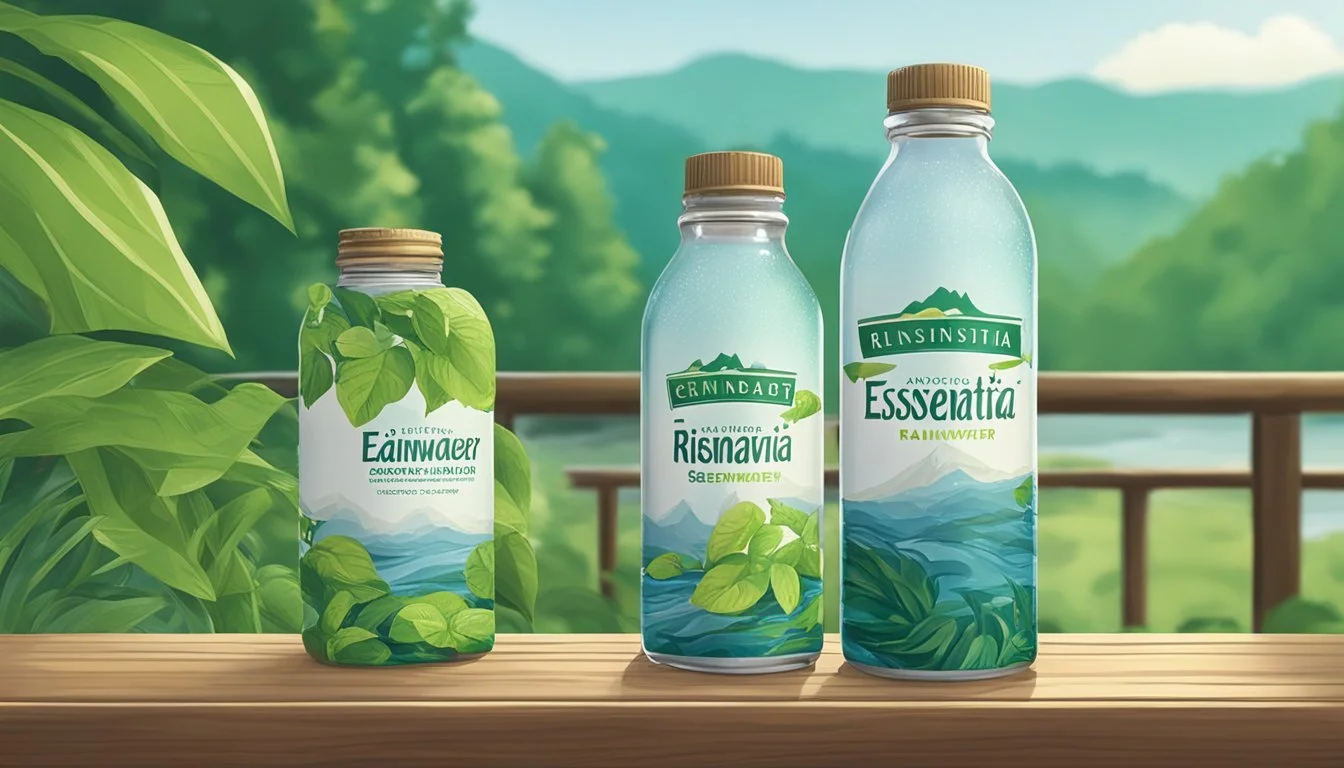Essentia vs. Richard’s Rainwater
Which Bottled Water is Better for You?
In the realm of premium bottled water, Essentia and Richard’s Rainwater present intriguing choices for health-conscious consumers. Essentia boasts a meticulous purification process involving micro-filters, reverse osmosis, and ultraviolet light, achieving 99.9% purity. Its high pH level of 9.5 or higher, enhanced by added electrolytes, aims to offer superior hydration.
Richard’s Rainwater, conversely, champions sustainability. This brand captures rainwater, purifies it through a rigorous process, and bottles it with a commitment to environmental stewardship. The unique origin of Richard’s Rainwater captures the purity of rain in every sip, creating a distinct appeal for eco-friendly consumers.
For those prioritizing both high alkalinity and consistent purity, Essentia stands out as the better choice. Yet, for individuals who value sustainability and a refreshing, natural taste, Richard’s Rainwater might be the preferred option. Each brand brings its own strengths to the table, satisfying different consumer preferences.
Understanding Bottled Water
Bottled water refers to drinking water packaged in plastic or glass bottles for retail sale.
Plastic bottles are common, usually made from polyethylene terephthalate (PET). They are lightweight and convenient but raise environmental concerns. PET bottles can take centuries to decompose, leading to pollution and waste in landfills and oceans.
Glass bottles offer a more sustainable option. Despite being heavier and more expensive, glass bottles are reusable and 100% recyclable. This makes them a preferred choice for consumers prioritizing sustainability.
Drinking water quality in bottled water varies significantly. Brands might offer ionized, alkaline, mineralized, or distilled water. These variations can impact taste, pH levels, and potential health benefits.
Essentia, for example, markets ionized alkaline water with a high pH, while Richard’s Rainwater emphasizes purity by using rainwater harvested directly from the atmosphere.
The environment and consumption patterns are key considerations. Plastic bottles contribute significantly to plastic pollution. Opting for glass bottles or brands with strong sustainability practices can help reduce environmental impact.
Here's a quick comparison:
Type Pros Cons Plastic Lightweight, convenient Environmental pollution Glass Reusable, recyclable, sustainable Heavier, more expensive
Both Essentia and Richard’s Rainwater aim to offer quality drinking water with differing focuses. Essentia provides ionized water, while Richard’s Rainwater taps into natural rainwater resources.
Consumers need to weigh factors such as quality, sustainability, and packaging when choosing bottled water.
Origins and Source
The origins and sources of Essentia and Richard’s Rainwater are crucial aspects that highlight their unique qualities and characteristics.
The Source of Essentia Water
Essentia Water originates from a variety of sources, including municipal water supplies. The water undergoes a rigorous purification process, involving microfiltration, reverse osmosis, and ultraviolet exposure.
Essentia’s process removes impurities and contaminants, such as metals and chlorine. After purification, electrolytes are added for taste and hydration benefits, enhancing the water’s alkalinity to a pH of 9.5.
This makes Essentia's origin a blend of advanced purification techniques, ultimately resulting in high-quality, ionized alkaline water.
The Story of Richard’s Rainwater
Richard's Rainwater starts with rain harvested directly from clouds, bypassing traditional ground or surface water sources. This rain is collected in specialized facilities designed to ensure cleanliness and purity.
The process involves capturing rainwater before it touches the ground, avoiding common contaminants found in groundwater or surface water. The collected rainwater is then filtered and disinfected to ensure it meets safety standards.
Richard’s Rainwater emphasizes the natural cycle of water, utilizing an eco-friendly approach by sourcing one of the purest forms of water directly from the atmosphere.
Collection and Filtration Processes
Essentia water and Richard's Rainwater adopt distinct methods for purification and collection to ensure high-quality drinking water. The key processes they use highlight the unique attributes of each brand.
How Essentia Water Is Purified
Essentia relies on a comprehensive purification process. It starts with reverse osmosis, which removes contaminants by pushing water through a semipermeable membrane.
Following reverse osmosis, the water undergoes UV exposure to eliminate bacteria and viruses. It is then passed through a microfiltration process to capture any remaining particles.
Essentia enriches its water with electrolytes, enhancing taste and hydration properties. The final product has a high pH level, typically over 9.5, making it distinctly alkaline.
Key Steps:
Reverse Osmosis
UV Exposure
Microfiltration
Electrolyte Enrichment
Rainwater Harvesting by Richard's Rainwater
Richard's Rainwater collects and purifies rainwater, integrating eco-friendly practices. The process starts with collecting rainwater from roofs and storing it in high-capacity tanks.
Collected water goes through sediment filtration, removing large particles. It then undergoes multiple stages of carbon filtration to eliminate organic compounds and chlorine.
Additionally, the water is treated with UV light to neutralize pathogens. Final stages include microfiltration and ozone exposure to ensure purity.
This method not only provides clean water but also promotes sustainability by utilizing naturally occurring rain as a source.
Key Steps:
Rainwater Collection
Sediment Filtration
Carbon Filtration
UV Treatment
Microfiltration
Ozone Exposure
Environmental Impact
Essentia and Richard's Rainwater take different approaches to their environmental strategies, particularly in their packaging solutions and renewable practices in bottling. These differences play a critical role in determining their overall impact on the environment.
Packaging Solutions
Essentia primarily uses plastic bottles, made from polyethylene terephthalate (PET). While PET is recyclable, the reliance on plastic raises concerns about long-term environmental sustainability and the potential presence of substances like BPA.
They have initiatives to improve the recyclability of their packaging.
Richard’s Rainwater opts for more sustainable packaging solutions, including glass and aluminum bottles. Glass bottles are more easily reusable and recyclable, reducing long-term waste.
Aluminum bottles also offer a recyclable option that is less environmentally impactful than single-use plastics.
Renewable Practices in Bottling
Essentia focuses on purifying already available water sources, which might alleviate some immediate resource strains, but their reliance on non-renewable energy sources remains a key area for improvement.
They are exploring renewable energy options to offset their energy consumption.
Richard’s Rainwater excels in renewable practices by collecting and purifying rainwater. This method reduces reliance on traditional water resources and supports a net-positive water footprint.
Their production processes also emphasize the use of renewable energy, minimizing the overall carbon footprint.
Understanding these differences provides insight into how each brand approaches sustainability, allowing consumers to make more informed decisions.
Taste and Water Quality
Essentia and Richard’s Rainwater offer distinct experiences in taste and water quality. Factors such as flavor profiles and the purity of the water play a crucial role in determining which might be better suited for different preferences and needs.
Flavor Profiles
Essentia water is known for its clean and smooth taste. This is achieved through a process involving micro-filtration, reverse osmosis, and ultraviolet exposure. The water is then infused with electrolytes, which can enhance its flavor, making it slightly alkaline with a pH of 9.5 or higher.
Richard’s Rainwater, on the other hand, is collected directly from rain and naturally filtered. It has a fresh and crisp taste that many find refreshing. The rainwater is purified using ozone and ultraviolet light, ensuring it remains free from contaminants while maintaining a natural mineral taste.
Purity and Cleanliness
Essentia boasts a high purity level, claiming 99.9% cleanliness. Their extensive filtration process ensures that most contaminants, including chlorine and fluoride, are removed. The addition of electrolytes not only improves taste but also helps restore essential minerals the body needs.
Richard’s Rainwater emphasizes natural purity. By collecting rainwater and filtering it through a natural process, they avoid many of the pollutants found in ground or tap water. The absence of chlorine and fluoride contributes to the crisp, clean taste, making it a popular choice for those seeking natural water.
Both brands excel in providing clean water, though they employ different methods to achieve this. Essentia focuses on high-tech filtration, while Richard’s Rainwater relies on natural collection and purification techniques.
Health and Safety Standards
Essentia and Richard’s Rainwater adhere to rigorous health and safety standards to ensure the quality of their products.
The FDA regulates bottled water, while the EPA sets standards for tap water. Essentia Water is purified and has added minerals. This meets FDA standards, ensuring it is safe for consumption.
Richard’s Rainwater collects and purifies rainwater. Its purification process eliminates harmful contaminants, aligning with EPA standards for clean drinking water.
Factors to consider:
Regulatory Compliance: Both brands comply with FDA regulations.
Purification Methods: Essentia uses purification with added minerals, while Richard’s employs rainwater collection and purification.
Ingredients and Contaminants:
Essentia adds minerals for taste and health benefits.
Richard’s Rainwater focuses on purity, with no added substances.
For those concerned about environmental impact, Richard’s Rainwater offers a sustainable option by using rainwater, reducing reliance on groundwater sources.
Brand Compliance Purification Process Added Ingredients Essentia FDA Purified with added minerals Minerals Richard’s Rainwater FDA Rainwater purification None
Ensuring both health and safety, consumers can trust the quality of these bottled waters under the strict regulations of FDA standards and EPA guidelines for clean water.
Product Range and Variants
Essentia and Richard's Rainwater offer distinct types of bottled water and unique variants to cater to different consumer preferences. Both brands emphasize quality and variety, ensuring they meet different hydration needs.
Essentia's Water Types
Essentia primarily offers ionized alkaline water. Known for its high pH level, typically over 9.5, this water is designed to enhance hydration. Essentia's water undergoes a special ionization process, which the company claims improve hydration efficiency.
Essentia is available in various bottle sizes, making it convenient for different consumption needs, from small personal sizes to larger bottles suitable for sharing. Although Essentia doesn’t currently offer flavored or sparkling water, its focus remains on providing pure, high-pH water.
Richard's Water Offerings
Richard's Rainwater distinguishes itself by bottling rainwater, offering both still and sparkling varieties. Their still rainwater is collected and purified through a stringent process, ensuring it meets high standards for quality and taste.
For those who prefer some fizz, Richard's Rainwater also provides sparkling rainwater. It offers a refreshing and unique take on traditional rainwater, catering to consumers looking for something different in their hydration choices.
The company places a strong focus on sustainability, underscoring its commitment to environmentally friendly practices in collecting and bottling water. Their product range is designed to appeal to eco-conscious consumers.
Market Presence and Availability
Essentia and Richard’s Rainwater both have distinct market presences and varied availability in different regions and retail outlets. Understanding where and how consumers can access these brands is crucial for evaluating their reach.
Retail Distribution
Essentia has a strong presence in major retail chains, including Whole Foods, making it widely accessible. It's known for its high pH level and alkaline properties, appealing to health-conscious consumers. Essentia’s distribution network covers large cities and suburban areas alike.
Richard’s Rainwater, on the other hand, has a unique market positioning, focusing on sustainability. It is particularly popular in communities around Austin and New Orleans, sourced locally from Texas and Mississippi. Richard's Rainwater emphasizes environmentally-friendly packaging and local distribution, with its water collected and purified in Dripping Springs, Texas.
Comparative Analysis
Essentia and Richard’s Rainwater are popular bottled waters with unique features and consumer recognition. This section evaluates their price points and consumer preferences.
Price Point Comparison
Essentia and Richard's Rainwater differ significantly in pricing strategies. Essentia, with its high pH level of 9.5 and advanced ionization process, tends to be on the premium side.
Typically, Essentia's bottled water prices range from $1.50 to $2.25 per liter.
Richard’s Rainwater, a lesser-known brand, falls within a mid-range price bracket. On average, their bottled water costs about $1.00 to $1.75 per liter.
While not as expensive as Essentia, it offers a cost-effective option for those seeking quality water. In comparison, brands like SmartWater and Fiji fall in similar ranges to Essentia, whereas brands like Arrowhead and Nestlé Pure Life provide more budget-friendly options.
Consumer Preferences
Consumer preferences highlight notable distinctions between Essentia and Richard’s Rainwater. Essentia draws customers who prioritize alkaline water and advanced purification methods. Its high pH level and rigorous filtering process, including micro-filters and reverse osmosis, attract those who believe in enhanced hydration and electrolyte benefits.
Richard’s Rainwater appeals to environmentally conscious consumers. Its rainwater harvesting method offers a unique selling point, attracting those interested in sustainable practices. The brand's packaging and marketing emphasize eco-friendly attributes, distinguishing it from typical bottled water brands like Liquid Death and Boxed Water.
While some consumers prefer the crisp taste of Richard’s Rainwater, others appreciate Essentia’s consistency and health claims.
Both brands cater to distinct market segments, making them suitable for different consumer needs.
More About Essentia
Essentia vs Cascade Mountain: Which Bottled Water is Better?
Essentia vs Hawaiian Springs: Which Bottled Water is Better?
Essentia vs Icelandic Glacial: Which Bottled Water is Better?
Essentia vs Kirkland Signature: Which Bottled Water is Better?
Essentia vs Mountain Valley Spring Water: Which Bottled Water is Better?
Essentia vs Nestle Pure Life: Which Bottled Water is Better?
Essentia vs Talking Rain AQA: Which Bottled Water is Better?
Essentia vs Whole Foods Italian Still Mineral water: Which Bottled Water is Better?
More About Richard’s Rainwater
Acqua Pana vs Richard's Rainwater: Which Bottled Water is Better?
Alkaline88 vs Richard's Rainwater: Which Bottled Water is Better?
Antipodes vs Richard's Rainwater: Which Bottled Water is Better?
Aqua Carpatica vs Richard's Rainwater: Which Bottled Water is Better?
Aquafina vs Richard's Rainwater: Which Bottled Water is Better?
Arrowhead vs Richard's Rainwater: Which Bottled Water is Better?
Boxed Water vs Richard's Rainwater: Which Bottled Water is Better?
Cascade Mountain vs Richard's Rainwater: Which Bottled Water is Better?
Castle Rock vs Richard's Rainwater: Which Bottled Water is Better?
Cirro vs Richard's Rainwater: Which Bottled Water is Better?
Richard's Rainwater vs HFactor: Which Bottled Water is Better?
Core Hydration vs Richard's Rainwater: Which Bottled Water is Better?
Crystal Geyser vs Richard's Rainwater: Which Bottled Water is Better?
Deer Park vs Richard's Rainwater: Which Bottled Water is Better?
Erewhon vs Richard's Rainwater: Which Bottled Water is Better?
Eternal vs Richard's Rainwater: Which Bottled Water is Better?
Ethos vs Richard's Rainwater: Which Bottled Water is Better?
Evian vs Richard's Rainwater: Which Bottled Water is Better?
Hawaii Volcanic vs Richard's Rainwater: Which Bottled Water is Better?
Hawaiian Springs vs Richard's Rainwater: Which Bottled Water is Better?
Ice Mountain vs Richard's Rainwater: Which Bottled Water is Better?
Icelandic Glacial vs Richard's Rainwater: Which Bottled Water is Better?
Just Water vs Richard's Rainwater: Which Bottled Water is Better?
Kroger vs Richard's Rainwater: Which Bottled Water is Better?
LIFEWTR vs Richard's Rainwater: Which Bottled Water is Better?
Liquid Death vs Richard's Rainwater: Which Bottled Water is Better?
Mananalu vs Richard's Rainwater: Which Bottled Water is Better?
Mountain Valley Spring Water vs Richard's Rainwater: Which Bottled Water is Better?
Nestle Pure Life vs Richard's Rainwater: Which Bottled Water is Better?
Origin vs Richard's Rainwater: Which Bottled Water is Better?
Ozarka vs Richard's Rainwater: Which Bottled Water is Better?
Penta vs Richard's Rainwater: Which Bottled Water is Better?
Perrier vs Richard's Rainwater: Which Bottled Water is Better?
Poland Spring vs Richard's Rainwater: Which Bottled Water is Better?
Purely Sedona vs Richard's Rainwater: Which Bottled Water is Better?
Richard's Rainwater vs 1907water: Which Bottled Water is Better?
Richard's Rainwater vs 7-Select: Which Bottled Water is Better?
Richard's Rainwater vs Action: Which Bottled Water is Better?
Richard's Rainwater vs Big Chill: Which Bottled Water is Better?
Richard's Rainwater vs Big Win: Which Bottled Water is Better?
Richard's Rainwater vs BodyArmor: Which Bottled Water is Better?
Richard's Rainwater vs CBD Living: Which Bottled Water is Better?
Richard's Rainwater vs Crystal Lake: Which Bottled Water is Better?
Richard's Rainwater vs Dasani: Which Bottled Water is Better?
Richard's Rainwater vs Essence pH10: Which Bottled Water is Better?
Richard's Rainwater vs Kirkland Signature: Which Bottled Water is Better?
Richard's Rainwater vs Open Water: Which Bottled Water is Better?
Richard's Rainwater vs Ophora: Which Bottled Water is Better?
Richard's Rainwater vs Proud Source: Which Bottled Water is Better?
Richard's Rainwater vs Pure Life: Which Bottled Water is Better?
Richard's Rainwater vs Ramona: Which Bottled Water is Better?
Richard's Rainwater vs Refreshe: Which Bottled Water is Better?
Richard's Rainwater vs Simple Truth: Which Bottled Water is Better?
Richard's Rainwater vs Skyra: Which Bottled Water is Better?
Richard's Rainwater vs Talking Rain AQA: Which Bottled Water is Better?
Richard's Rainwater vs The Well: Which Bottled Water is Better?
Richard's Rainwater vs Weird Water: Which Bottled Water is Better?
Richard's Rainwater vs Whole Foods 365: Which Bottled Water is Better?
Richard's Rainwater vs Zenwtr: Which Bottled Water is Better?
San Pellegrino vs Richard's Rainwater: Which Bottled Water is Better?
Smartwater vs Richard's Rainwater: Which Bottled Water is Better?
Solan de Cabras vs Richard's Rainwater: Which Bottled Water is Better?
Starkey vs Richard's Rainwater: Which Bottled Water is Better?
Tahoe vs Richard's Rainwater: Which Bottled Water is Better?
Topo Chico vs Richard's Rainwater: Which Bottled Water is Better?
Tru Alka vs Richard's Rainwater: Which Bottled Water is Better?
Volvic vs Richard's Rainwater: Which Bottled Water is Better?
Waiakea vs Richard's Rainwater: Which Bottled Water is Better?
Whole Foods Italian Still Mineral water vs Richard's Rainwater: Which Bottled Water is Better?
Zephyrhills vs Richard's Rainwater: Which Bottled Water is Better?









